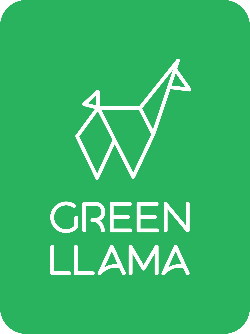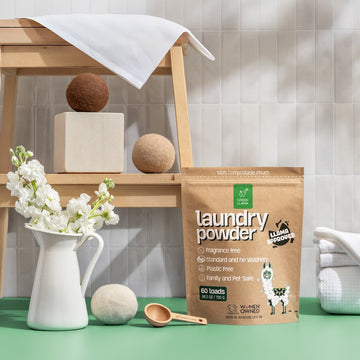The Best Eco-Friendly Laundry Detergents of 2025 (And What to Avoid)
by Kay Baker on Oct 09, 2025
Laundry & Sustainable Living
The Best Eco-Friendly Laundry Detergents of 2025 (And What to Avoid)
Transparency note: Educational content verified under Green Llama’s EEAT & Trust Framework. Science reviewed by our Chief Science Officer.
The laundry aisle is a dizzying landscape of plastic jugs, pods, and paper-thin sheets, all promising a brilliant clean. But as we become more aware of what’s in our products and where the packaging goes, a simple question arises: What does “clean laundry” really mean?
Is it a load washed in harsh chemicals and synthetic fragrances, packaged in a single-use plastic jug destined for a landfill? Or can we achieve fresh, stain-free clothes with a system that’s safer for our families and kinder to our planet?
This guide is your filter. We’ll cut through the greenwashing and give you a clear, powerful checklist for choosing a truly eco-friendly laundry detergent that actually works.
For a full look at natural cleaning systems, read our Ultimate Guide to Natural Cleaning Products.
The Problem with Conventional Laundry Detergents
- Plastic Waste: Over 700 million plastic jugs end up in U.S. landfills and waterways every year (Source: Earth Day Network).
- Harsh Chemicals & Fragrances: Conventional detergents often use petroleum-based surfactants and synthetic fragrances that can irritate skin and hide endocrine-disrupting phthalates.
The Eco-Friendly Detergent Checklist: 4 Pillars of a Better Clean
1. High-Efficacy Cleaning Power
An eco-friendly detergent must first be a great detergent. It should fight stains, eliminate odors, and perform well in all water temperatures—especially cold.
- Enzyme-Powered Formulas: Look for enzymes like protease, amylase, and lipase (nature’s stain fighters).
- Cold-Water Performance: Washing in cold water can cut energy use by up to 90% (Source: ENERGY STAR).
- Plant-Based Surfactants: Derived from coconut or similar sources for effective, gentle cleaning.
2. Ingredient Safety & Transparency
You deserve full ingredient transparency. Look for:
- Third-Party Certifications: Confirms safety for people and planet.
- Hypoallergenic & Fragrance-Free: Sensitive-skin options with no dyes or brighteners.
- Full Ingredient Disclosure: Every ingredient listed, not just “actives.”
3. A Truly Zero-Waste Format
Format defines footprint. Choose right:
- Green Flag: Tablets & powders in compostable or cardboard packaging—no water, no plastic.
- Closed-Loop Refills: Aluminum or returnable refill systems.
- Red Flag: Single-use plastic jugs and film-wrapped pods.
The Green Llama Way
We engineered Green Llama Laundry Powder to check every box: enzyme-powered, cold-water ready, PVA-free, fragrance-free, and shipped in 100% compostable pouches. It’s real performance—without plastic or compromise.
4. Real Value (Cost-Per-Load)
Eco-friendly doesn’t mean expensive. Concentrated powders and tablets deliver a lower cost-per-load than heavy, water-filled liquids.
Frequently Asked Questions
Do eco-friendly detergents work on tough stains?
Yes! Enzyme-powered, plant-based detergents break down complex stains like grass, coffee, and oil. Pre-treat for best results.
What’s the difference between laundry soap and detergent?
Soap is natural but reacts with hard water, leaving residue. Detergents use surfactants that rinse clean—better for modern machines.
Trust & Reader Support
- 24-hour correction pledge: We review and update this article within 24 hours if an error is reported.
- Contact CX: hello@greenllamaclean.com
- Returns: 90-day money-back guarantee on starter kits. See policy.





